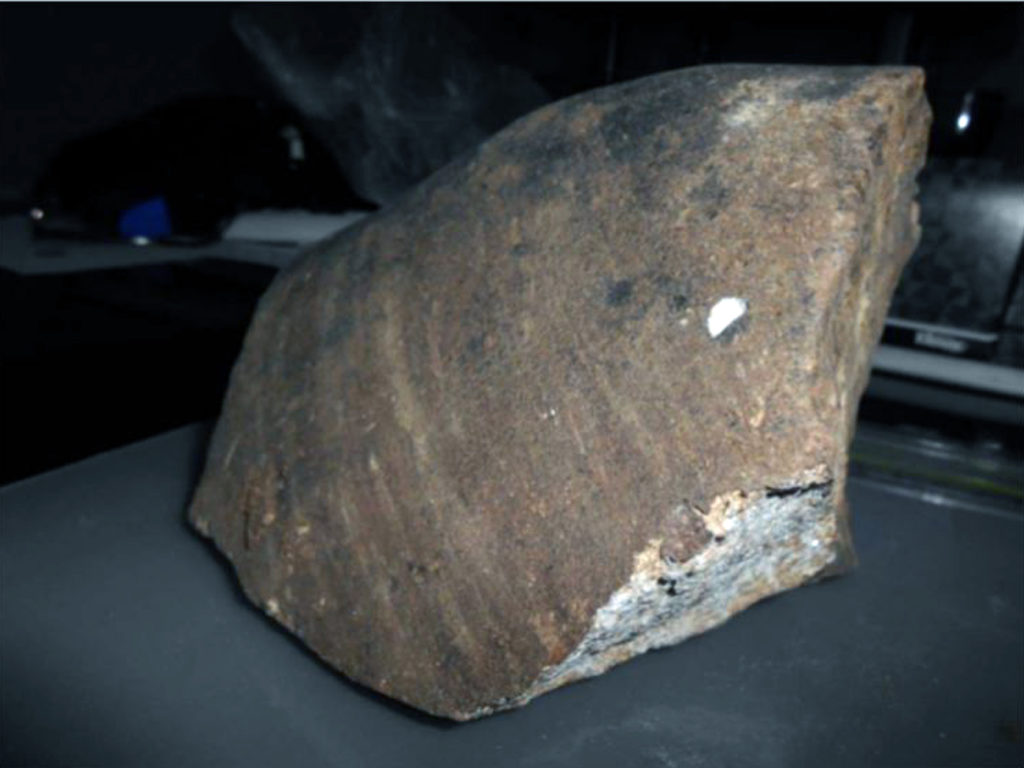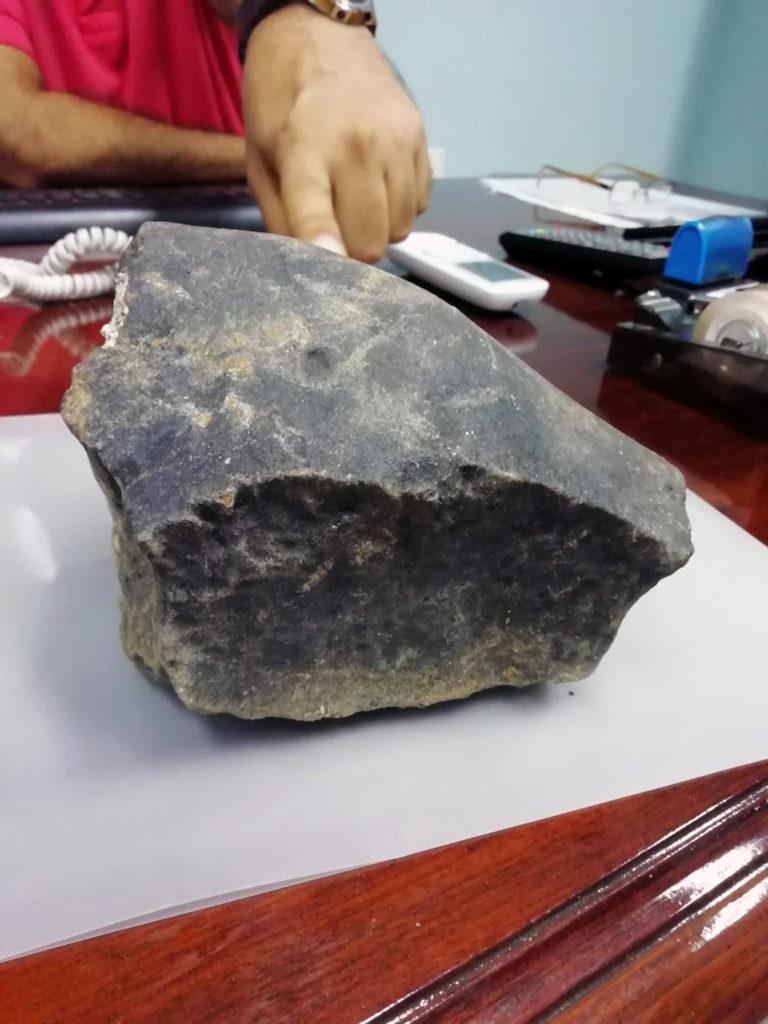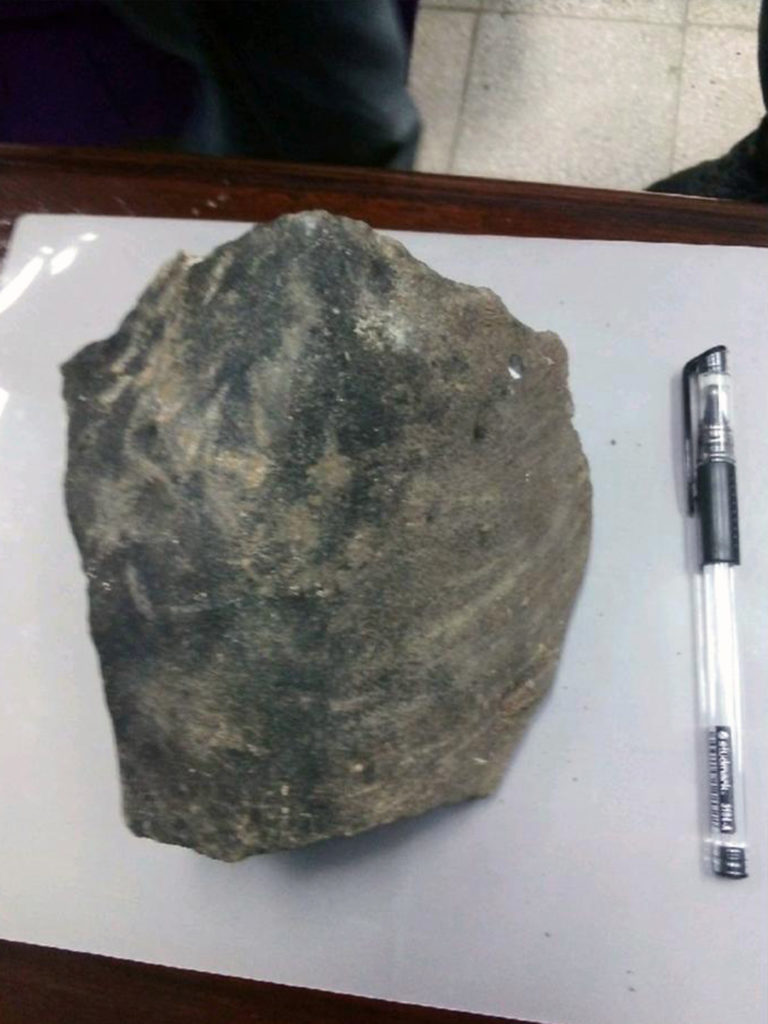‘Ramón de las Yaguas’ (prov.), apparent meteorite fall at ~16.56 UTC on 10 July 2021 (OC (‘L6’?), 2.76 kg) near El Ramón de las Yaguas, Santiago de Cuba province, Cuba
Last update: 30 May 2024
On 16 July 2021 the Ciencia Tecnología y Medio Ambiente (CITMA) of Cuba reported that on 10 July a 2.76-kilogram meteorite (13.7 cm x 12.9 cm x 9.8 (11) cm) was found by farmer Roldilandis Hechevarría Negret in a clearing, about 12 metres from his house, at location ~ 20°02’51.4″N, 75°31’44.1″W , about one kilometre northwest of the village El Ramón de las Yaguas in Santiago de Cuba. The Delegación de Santiago was informed about the incident on 10 July by Co. Máximo de la Cruz Torres, president of the Popular Council of El Ramón de Las Yaguas, Santiago de Cuba municipality, Santiago de Cuba province. Some residents of Ramón de las Yaguas claim they saw a bolide and its dust trail. Then they heard some thundering noise shortly before ~16.56 UTC. Dr. Enrique Arango Arias from the National Seismological Service collected information about this potential fall by interviewing the local population. On 15 July members of CITMA went to the area to investigate the matter. They took the meteorite and sent it to Havana for analysis by experts from the Institute of Geophysics and Astronomy (IGA) of the Environment Agency (AMA). A small sample of about 45 grams has been cut off the meteorite for analysis and classification. On 2 September the Institute of Geophysics and Astronomy (IGA) reported that it has “graphic records of the seismic noise, caused by the explosion of the meteorite when entering the Earth’s atmosphere, over the territory of Santiago de Cuba” shortly before 16.56 UTC in the afternoon of 10 July.
We believe that during the classification process of this meteorite a thorough analysis of short-lived cosmogenic radionuclides with very short half-lives must be performed very quickly. It must be confirmed with certainty that this meteorite actually fell on 10 July and not earlier.
According to Dr. Manuel Iturralde-Vinent in a media report (Juventud Tecnica ) on 26 May 2024 a fragment of the meteorite is being analysed using field emission scanning electron microscopy and electron microprobe techniques by a team of MinResET (Mineral Resources for the Energy Transition) a research group based at the Universitat de Barcelona and the Natural Science Museum of Barcelona. This improved analysis is a necessary step for an intended official registration of the meteorite in the Meteoritical Bulletin.
Nota informativa sobre posible caida de meteorito (CITMA press release) (16 July 2021)
NOTA OFICIAL SOBRE LA CAÍDA DE UN METEORITO EN SANTIAGO DE CUBA (2 September 2021)
Meteorito de Ramón de las Yaguas: lo que se sabe hasta ahora (Juventud Técnica, 2 September 2021)
Characterization of the “Ramón de las Yaguas” meteorite, fell in eastern Cuba
Rene Yasmany Cobas Torres, Deysy De La Nuez Colón, Mercedes Torres La Rosa, José García, , Manuel A. Iturralde-Vinent, Enrique D Arango Arias
February 2022
LINK (OPEN ACCESS)
PDF (DOWNLOAD)

Reenactment: the meteorite in its reported impact pit, which is said to have been ‘altered’ by the locals. Photo: CITMA
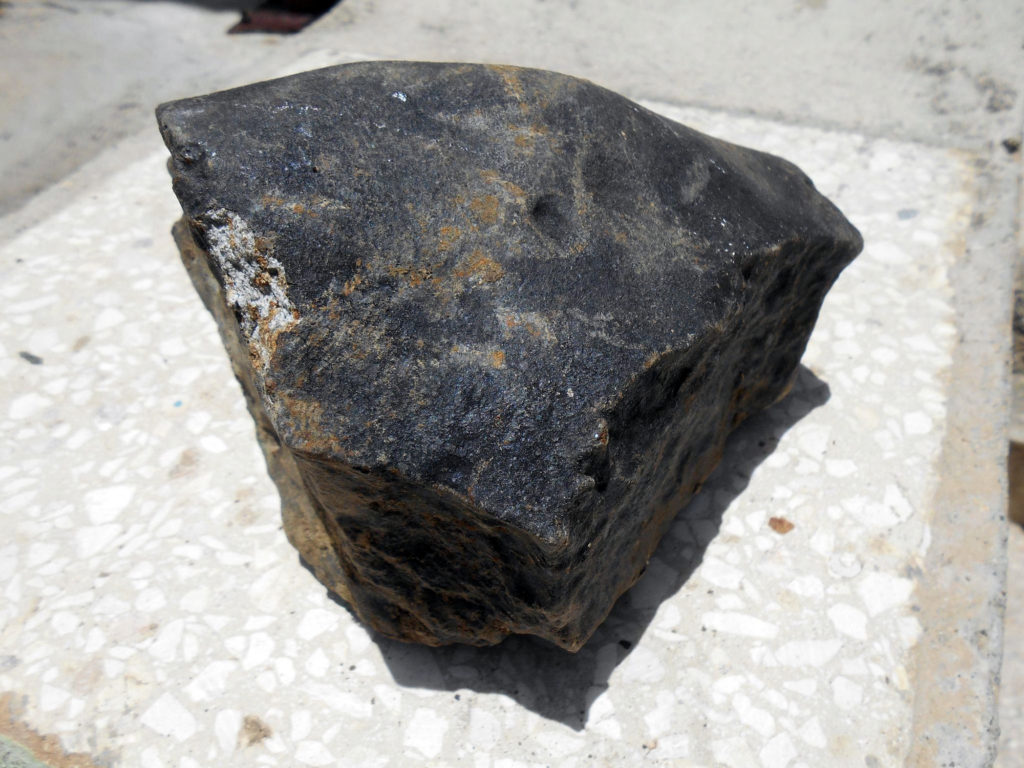
The found meteorite. Photo: Dr. Enrique Diego Arango
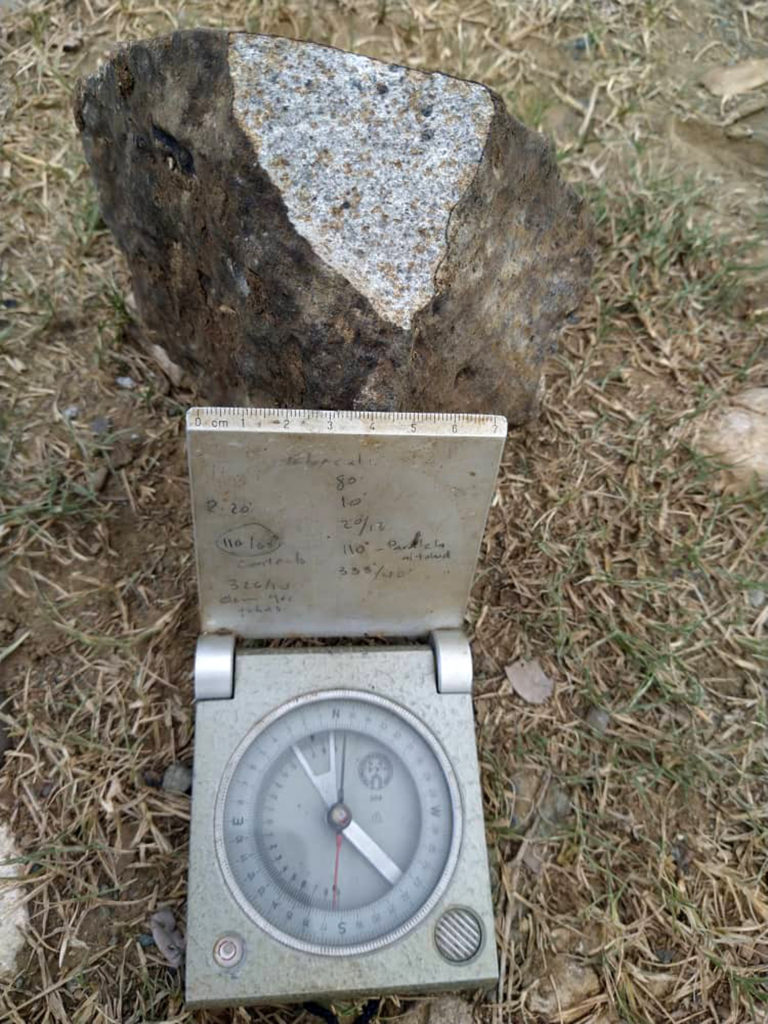
The meteorite in the field. Photo: Dr. Enrique Diego Arango

Meteorite being measured near supposed fall site. Photo: CITMA

Photo: Instituto de Geofísica y Astronomía, Citma
Report by Negré, witness of the meteorite fall in the Ramón de las Yaguas town, in the Songo La Maya municipality, Santiago de Cuba province. Video: Dr. Enrique Diego Arango

Details of graphic records of the explosion, upon entry into the atmosphere of the cosmic object, captured in three seismological stations in the Cuban East, sent to the IGA by the Central Station of CENAIS, Santiago de Cuba. The coincidence in UTC time of the record of the Río Carpintero Seismological Station is circulated in red, and a small offset in real time, in the two remaining Stations, due to the greater distance of the latter in relation to the place of the explosion and meteorite fall. Image:


